Crumbling school buildings, a proposed tax increase — What’s at stake in KCKPS bond vote?
Two Central Middle School students run through the April rain, covering up to stay dry, and wait outside the locked trailer until a teacher can let them in.
It is a common sight at a school so overflowing that the outdoor trailer — one of four dedicated to Central — serves as a classroom.
Battling the elements, Principal Ileana Farney says, is only one of the issues that challenge the educational experience for 725 students enrolled in the 109-year-old school building. Others include undependable air-conditioning, too few bathrooms and a shortage of hallway lockers, where two or three students are assigned to share one.
“Every inch of space, we have to use,” Farney told The Star recently as she walked the halls of Central, showing off the various quirks of the building, like two staircases that lead nowhere and a broken gymnasium basement shower that houses tires for football practice.
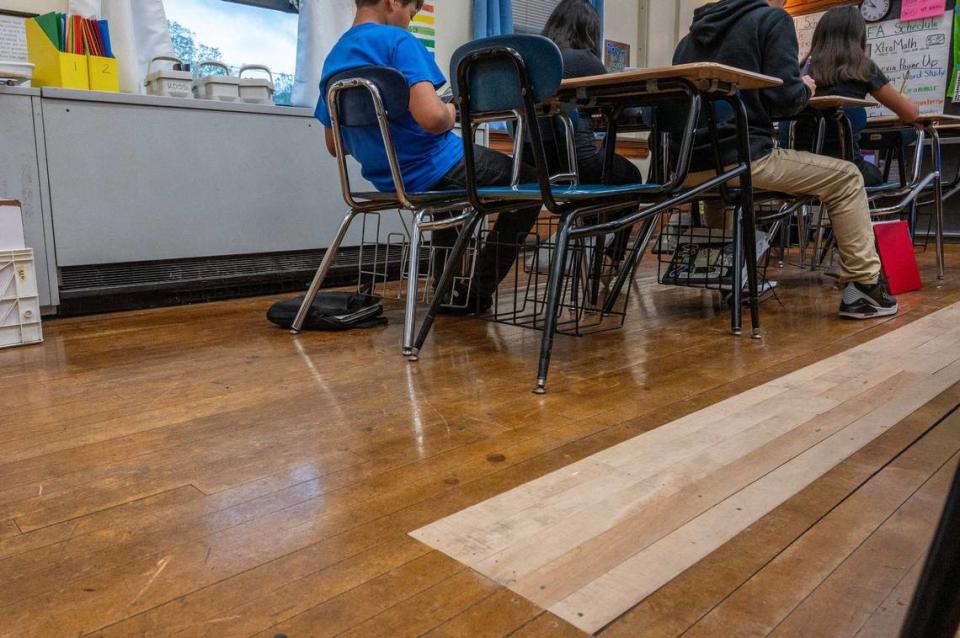
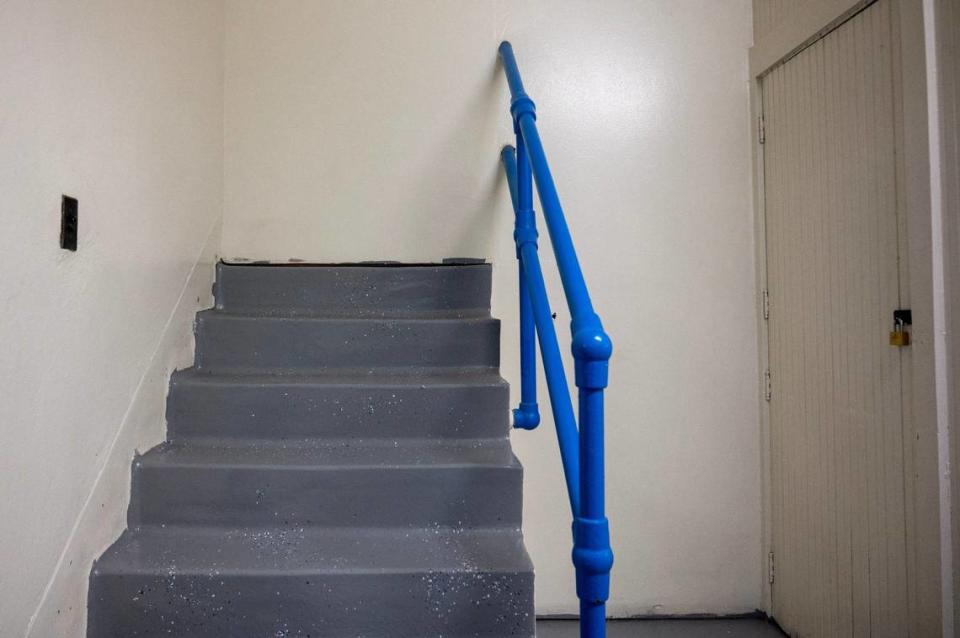
Kansas City, Kansas Public Schools officials have a plan to address the needs at Central and other aging facilities. And on May 7, voters will decide whether to accept or reject a $420 million bond issue to pay for school rebuilds, a new public library and district-wide upgrades.
Proponents view the bond as a clear way to repair crumbling infrastructure that will serve students and teachers. More broadly, they say, the projects could also fuel economic development and widen the tax base by attracting new residents with more desirable schools.
Critics, meanwhile, question whether district residents should shoulder a projected property tax increase, as about 17% live below the federal poverty line, according to U.S. Census data. And they are skeptical of unspecified components, such as the future locations of a new Central Middle and a proposed aquatic center, which have yet to be determined.
For the owner of a home valued at $150,000, the district estimates the yearly tax bill will go up by $146.63. By the same evaluation, brick-and-mortar businesses would see more than double that increase.
Five of the elected seven-member school board approved sending the measure to a referendum, and two pushed back against it. And some residents have since joined warring political campaigns in favor of and opposed to the plan.
Over recent months, Superintendent Anna Stubblefield, has been making the case at community meetings that these improvements are long overdue. During an interview with The Star, she said her duty is not to tell residents which way to vote — only to arm voters with “accurate, factual information so that people can make an informed decision.”
Stubblefield, who took the helm in 2021, noted the major infrastructure update voters approved in 2016 — a $235 million, no-tax-increase bond that led to construction of new facilities, including Gloria Willis Middle School — came with a promise by her predecessors to later rebuild even more dated buildings.
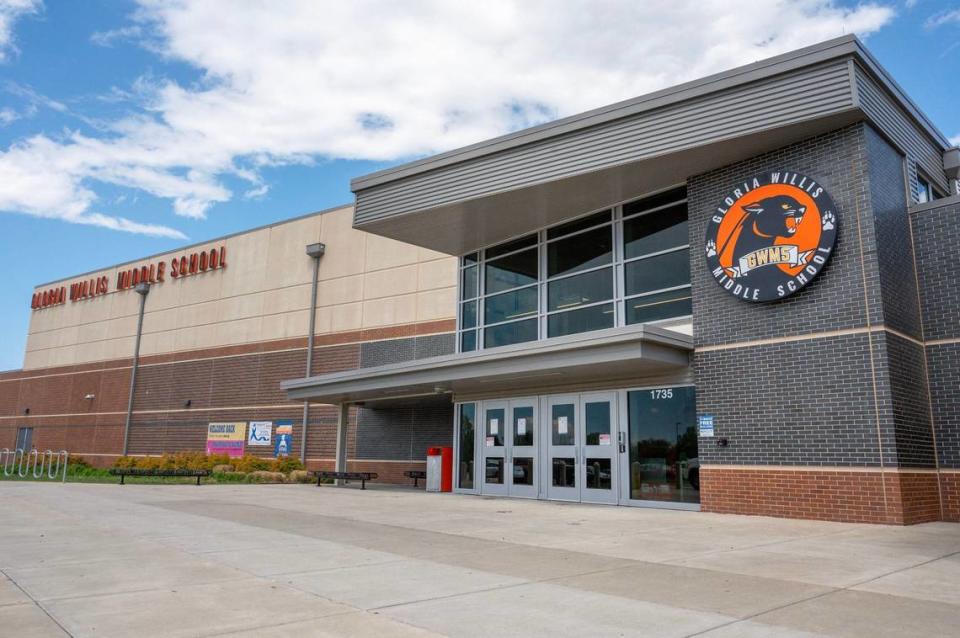
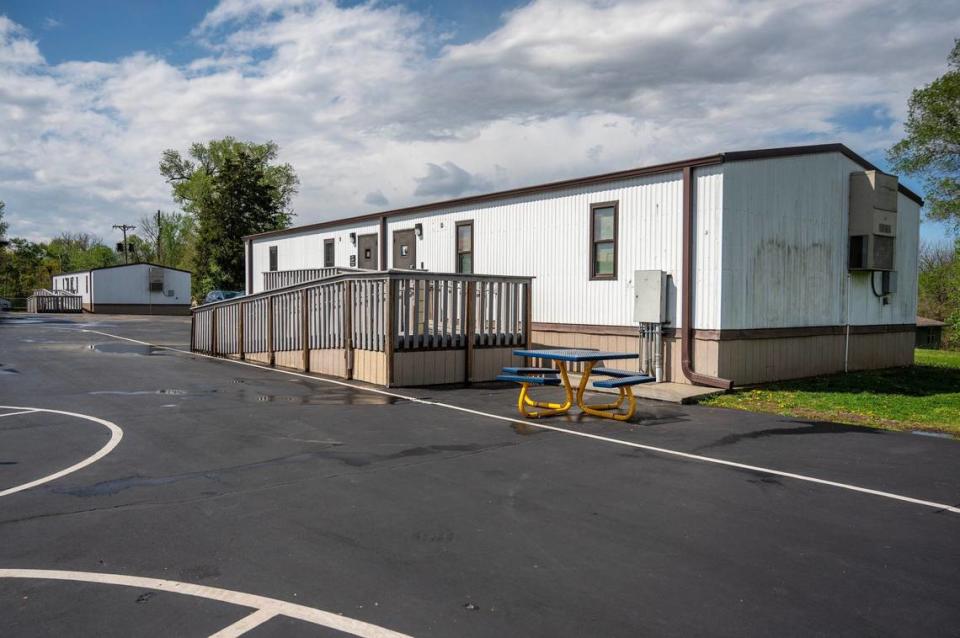
As it stands, students who attend school in new buildings versus old ones have a vastly different experience. For example, Stubblefield said, the district last year won a $50,000 grant from NextEra Energy to remake a classroom where students can learn how to be “medical detectives” and investigate disease outbreaks.
Only new middle schools Gloria Willis and Carl B. Bruce could be considered for that grant, Stubblefield said, because the district’s older schools were simply unequipped to support such an upgrade.
“That level of inequity is not often thought about,” Stubblefield said. “Because the purpose of the grant was not to make the facility up to date. The purpose of it was to take it to the next era. And you have to be in the current era to take it to the next era.”
What’s the plan?
Under the district’s proposal, six elementary schools — Silver City, Noble Prentis, Eugene Ware, Lindbergh, Emerson and New Stanley — would be combined into three. Each of those projects is estimated to cost $35 million.
Central and Argentine middle schools would also be rebuilt at a cost of about $61.8 million each.
Single-story additions would be made at M.E. Pearson and Whittier elementary schools, at $2.6 million apiece, replacing mobile classrooms there. Gymnasium additions for F.L. Schlagle and J.C. Harmon high schools are estimated to cost $6.3 million each.
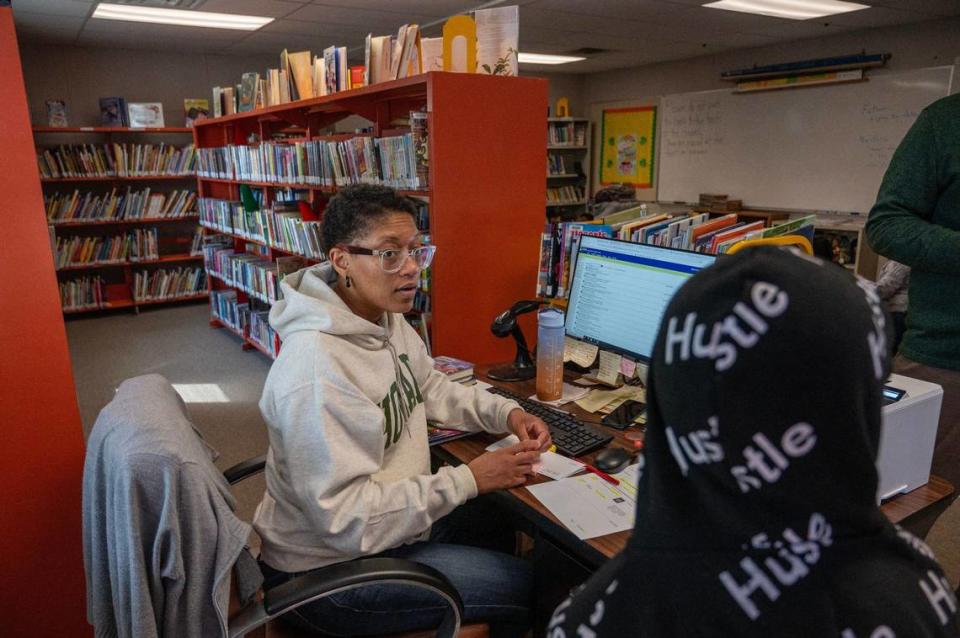
Broader upgrades across the district — officials say every school would be touched in some way — amount to $66.7 million. Those include improvements for middle and high school auditoriums, interior and exterior athletics and special education.
The bond would also cover $44.5 million of deferred maintenance costs, including concrete repairs, playgrounds and fencing.
Other proposed facilities are a $15 million district aquatic center, a $20 million expansion of early childhood capacity and up to $20 million to build a new main public library.
‘Vote yes’ says upgrades needed for quality education
KCKPS Board President Randy Lopez, among those who supported putting the bond issue on the May ballot, said the decision came after a long evaluation to measure the district’s needs.
Lopez said new school buildings will address some of the desires students and teachers expressed to have a better learning environment.
State funding has decreased for public school capital projects in recent years, Lopez said, referencing the 31% share Kansas would carry if the bond passes in May. The state picked up 51% of the tab on the last bond issue nearly eight years ago.
The promise of state tax dollars being invested in the community is one of the points Lopez is raising when confronted with tax increase concerns.
“We wouldn’t be asking for this bond if we didn’t believe that it was important and critical for today’s needs, and for the future of our students and educators, and our community,” Lopez said.
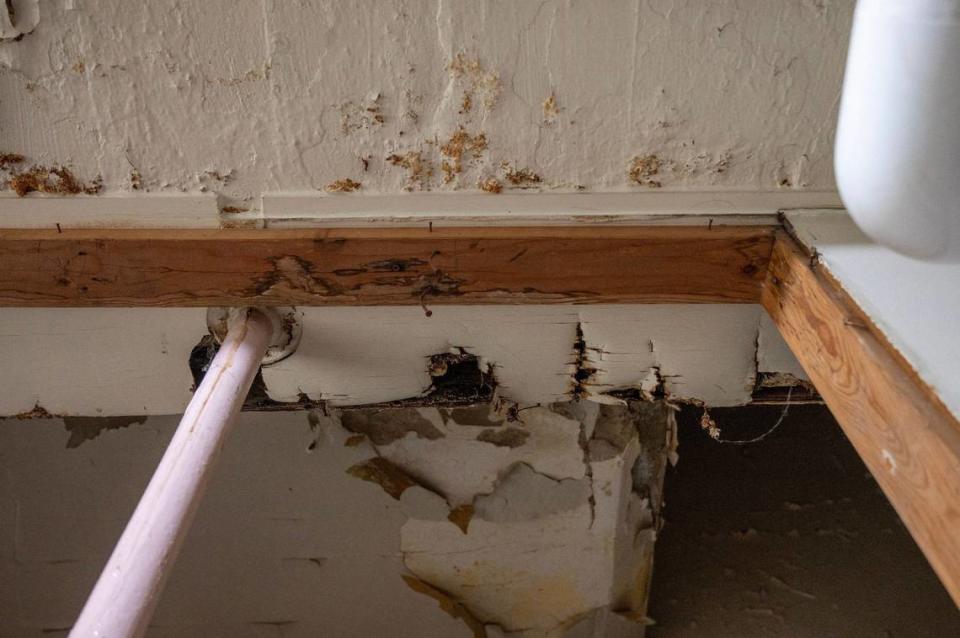
Rachel Russell, another board member, said she sees the capital program as a win for students, staff and the broader community.
She said new school facilities could play a role in student achievement, because “environments matter” when it comes to those goals.
“I believe that we can do both things. We can focus on student achievement and improving facilities,” Russell said. “Those aren’t two things that have to work one after the other.”
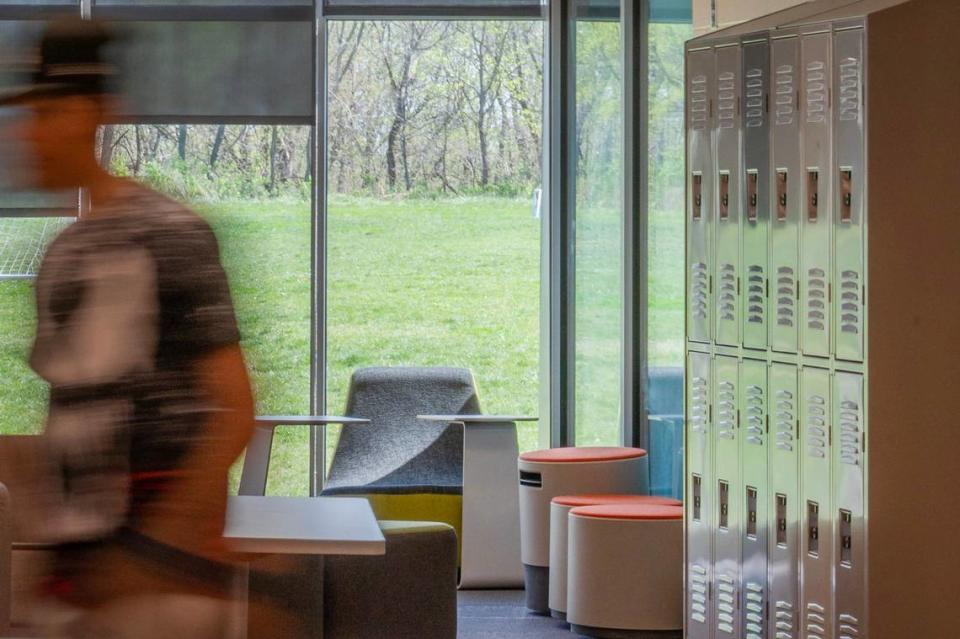
In the leadup to the special election, yard signs encouraging the bond’s passage have begun to sprout in KCK. Leading that charge is the Committee for A Stronger Future, chaired by Marcus Winn, a community organizer.
Along with a better environment for students and staff, Winn views the bond as a major investment that could set the stage for more people and businesses moving to KCK — ultimately bringing down property taxes for everyone.
“I’ve talked to kids who wear winter coats to their classes because they can’t keep their classrooms warm enough through the coldest days of the year,” Winn said. “And I think we can fix that. And we should. And that’s part of how we build a community that people want to move to.”
The biggest concerns he’s heard from others in the community are about the cost of the school bond and doubt about how local institutions spend taxpayer money.
“There is some real healthy and understandable skepticism about the way taxes have been spent in Wyandotte as a whole,” Winn said. “But I think the school district has put forward a pretty good proposal that’s worth supporting.”

‘Vote no’ worries about tax increase, test scores
KCKPS Board members Wanda Brownlee Paige and state Rep. Valdenia Winn voted against putting the bond issue on the ballot — and have spoken publicly against its passage. During a recent community meeting at the UAW hall in the Fairfax District, where about 100 attended, Winn advised Kansas City, Kansans to “just vote no.”
On the forefront of the opposition campaign is Pamela Penn-Hicks, a longtime political activist in KCK who has been handing out yard signs and fliers telling neighbors to vote it down.
Referencing demographic data, Penn-Hicks told The Star she believes the community “cannot stand the pressure” of higher taxes.
In the Kansas City, Kansas Public Schools District, the median household income for residents as of 2022 was $53,544, according to U.S. Census data. Roughly 17% live below the federal poverty line.
“We have a lot of older people who are on fixed incomes,” Penn-Hicks said. “And it presents a burden for them. They’re already struggling with the current tax levels that we have in Wyandotte County.”
Penn-Hicks said she’s also worried about the state of academic achievement among students. She thinks the district should bring up test scores before asking residents to support major capital projects.
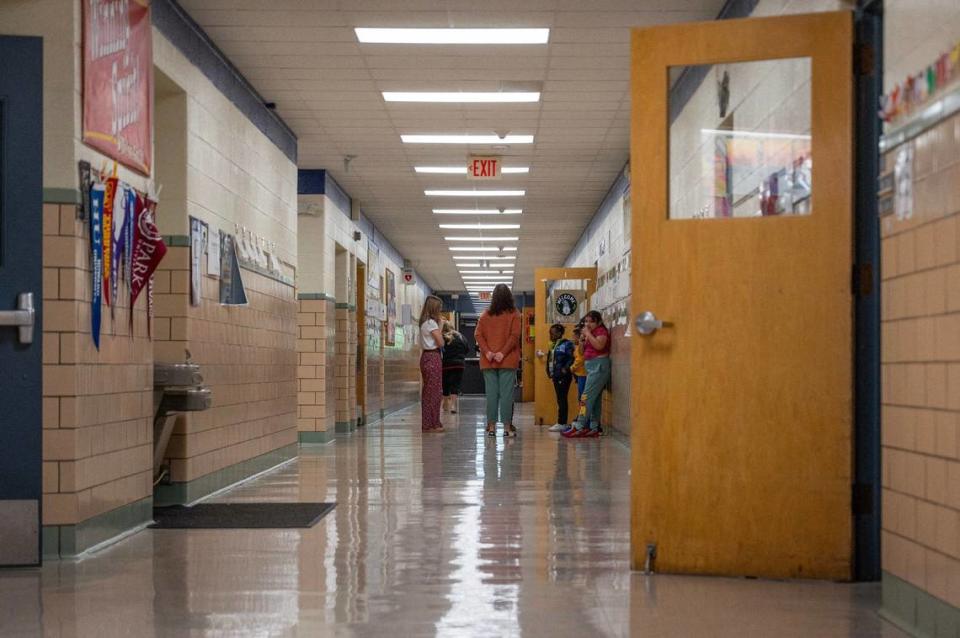
Her children and grandchildren went through KCKPS — and she saw what she described as a “serious decline” in the quality of education there. It inspired the transfer of her youngest granddaughter to private school.
“My main concern is that we improve the quality of education here. I think that should be the primary focus of the school district,” Penn-Hicks said, adding: “Right now, I think that this is a risky deal for our community and that our focus should be on improving the education system.”
Overall academic benchmarks have lagged behind state standards. In 2023, the Kansas State Board of Education gave the district conditional accreditation, citing among the reasons “substantially” lower-than-average scores on assessment tests.
The state board earlier this month restored full accreditation to KCKPS based on the district’s current improvement plan. Superintendent Stubblefield referenced that as a sign academic success is headed in the right direction.
Disparity between new and old schools
In 2019, district officials cut the ribbon on the new Gloria Willis Middle School. It was built with the passage of the bond initiative three years earlier to accommodate students of Coronado and West — both of which were torn down.
Salvaged floorboards from Coronado and West’s gymnasiums form a collage in a Gloria Willis hallway. The new building has modern security features, an auditorium for the performing arts and a music room designed with acoustics in mind.
Four Gloria Willis students spoke to The Star briefly about their experience in the new school building. Highpoints include access to good teachers, facilities and technology.
“It is a big campus. I feel like you would like everything you do here,” Nelson McConnell, 14, said of student life at Gloria Willis.
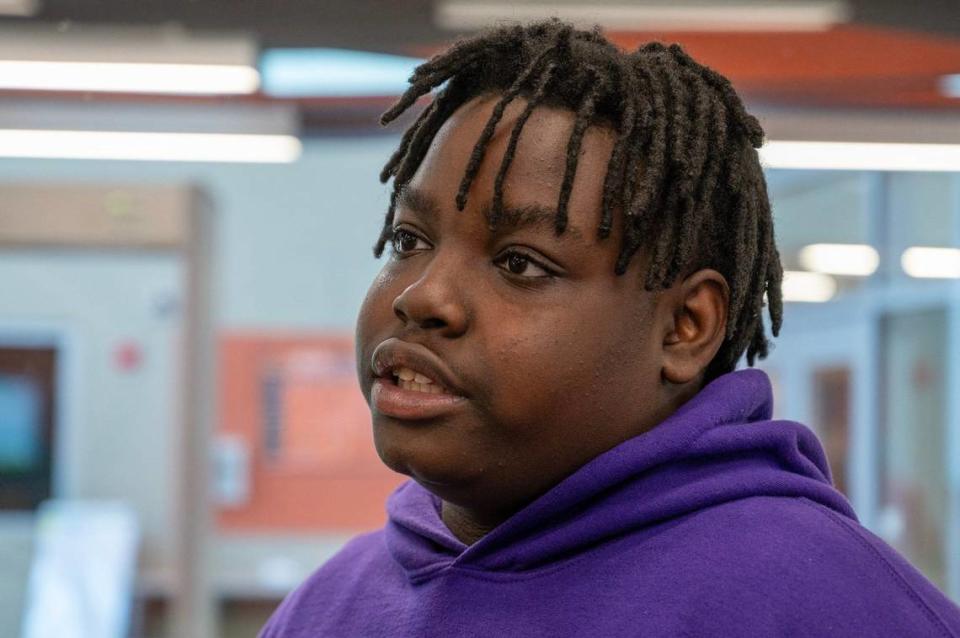

The view is different three miles east at Eugene Ware. Like Central Middle, the elementary school has worn with age and is without adequate space for its students and staff, says Monica Randle, the school’s principal.
Eugene Ware — built in 1950, with a southern addition a few years after — has 240 students in grades K-5. A simple tell for where the old building ends and the new begins is the different shape and color of the wall tiles.
In the hallway near the main entrance are two cubicles. One serves as a common workspace, the other a teacher’s lounge.
The gymnasium doubles as a cafeteria. In the back is a kitchen added a few years ago. Before then, meals were driven to and dropped off at school each day.
A kindergarten classroom has ceiling tiles that’ve been known to become displaced. Screws have been added to prevent them from hitting the floor.
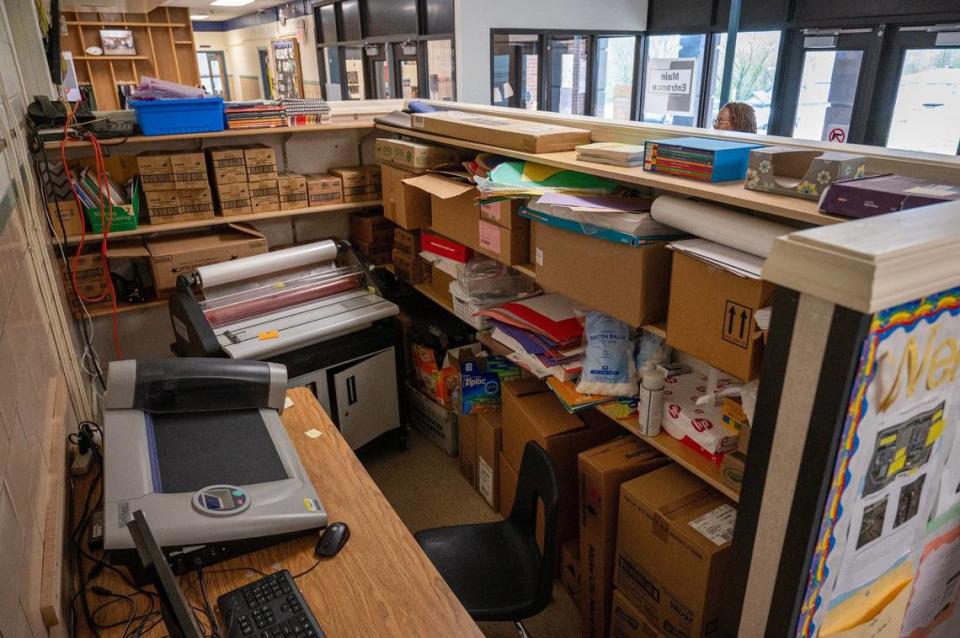
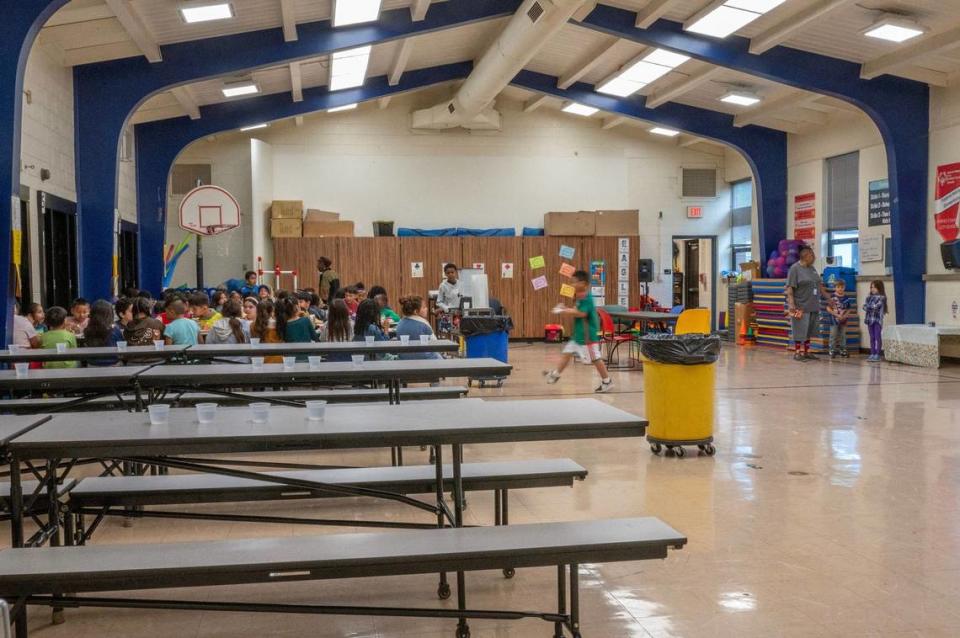
And outside are four trailers to house the library, music hall and two classrooms beside a large, unfenced stretch of land. Stray dogs sometimes wander the property, Randle said, and police have advised the school to go on lockdown at times when people have been seen running through the wooded area.
The trailers have a couple advantages. For one, Randle says the air conditioning works better than inside the muggy main building.
Last week, Randle asked a group of kids having class in the trailer that functions as its library: “Do you know what a bond is?”
A few hands raised. One student thought she meant two things coming together. Another said it was about raising money.
The principal asked another question: How many would like a new school building?
Every hand shot up. And Randle said they would be getting a flier to take home that day.
“I can’t tell your parents how to vote,” she said. “But your parents can vote in a couple weeks and determine whether we will get a new building.
So, y’all can talk to your parents about how you want them to vote.”


